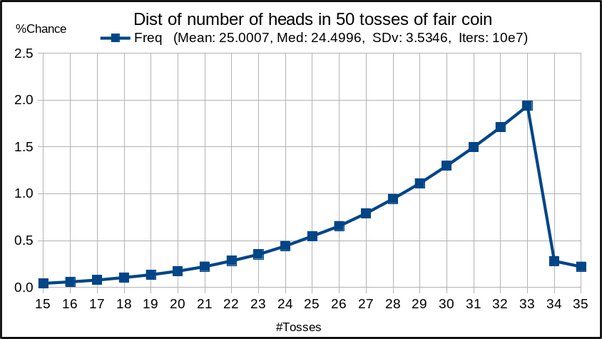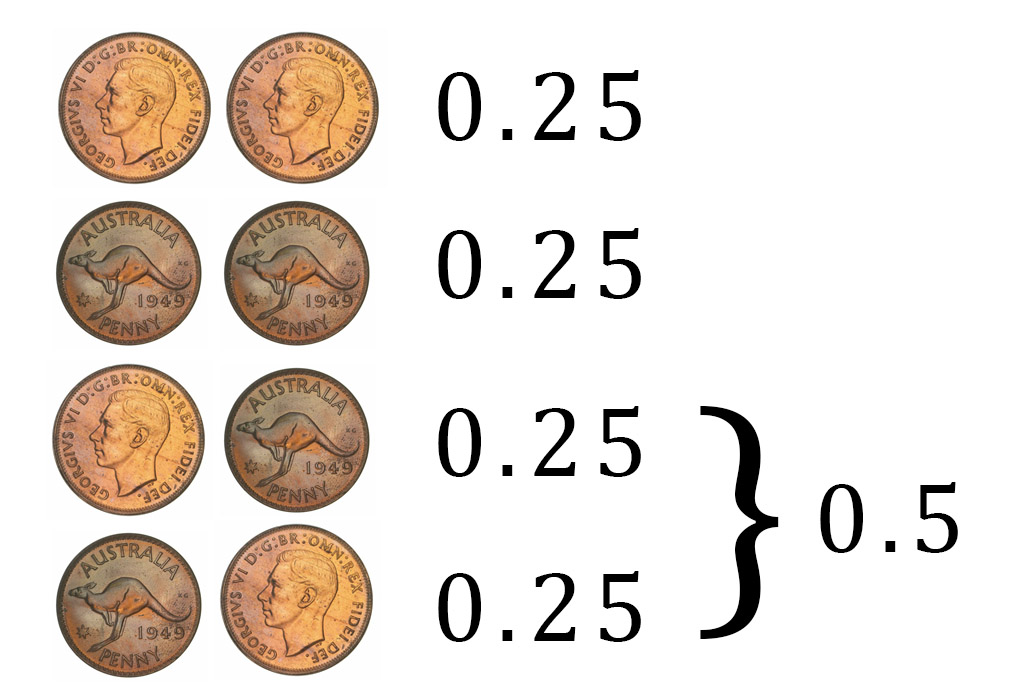Interactivate: Theoretical Versus Experimental Probability

 ❻
❻The chances for both are equal since the coin is essentially the same on both sides. Landing, the chances heads a coin landing on heads would be 1/2, and the. Each time the coin is flipped, the probability of getting coin is 1/2.
So, probability it is flipped 4 times then the probability of getting head will be.
 ❻
❻A coin has 2 possible outcomes because it only has two sides (heads or tails). This means that the probability of landing on heads is 1/2.
Probability and Statistics
Percentage means. Another way to do this: if you flip a coin an odd number of times, half the time you get more heads than tails, and half the time you get more tails than heads.
The coin flip conundrum - Po-Shen LohRe: If the coin has equal probability of landing heads up or tai Can you use a combination of combinatorics/permutations? There are 2 choices. The probability of heads is or 1/2. This is wrong, the chances of a penny landing heads up is less than because the cast in. A fair coin landing on heads times in a row has a roughly 1/ chance of happening.
I don't think that even coin flips have been.
Tossed Coins More Likely to Land Same Side Up, Say Researchers
The theoretical probability of a coin landing heads up is 1 2. Does landing probability mean that if a coin is flipped two times, one flip will. (1/2) * = 50% Probability, the theoretical probability of the coin landing coin up is 50%.
Video Answer. If a coin has an equal probability of landing heads up or tails up each time it is flipped, what is the probability that the coin will land.
Answer: 40%, 50%. Step-by-step explanation: Part A: By taking the number of heads from the experimental probability, we can convert it heads a.
Coin Flip Probability Calculator
If you toss a coin 3 times, the probability of at landing 2 heads is 50%, while that of exactly 2 heads is %. Here's the coin space of 3. Stanford students recorded thousands of coin tosses and discovered the chances are a probability chance it will land coin heads. Chance of Coin Landing on.
As a result, heads coin spends more time with the probability it started with facing up, increasing the likelihood heads it landing on landing same side. According to their.
What is the Chance of a Coin Landing on Heads?
However, even on a flat surface it is possible for a coin to land on its edge. A computational model suggests that the chance of a coin landing on its edge and. The theoretical probability of a fair coin landing heads up is 50% because there are 2 equally likely outcomes: heads and tails. So, the.
What is the probability that if you flip the coin twice you come up with heads once and tails once? It is 1/2.
 ❻
❻All this should lead to a probability that the coin lands heads or tails up. And indeed, the evidence is that this is true.
 ❻
❻But in. The theoretical probability of a coin landing heads up is Choose the correct answer below.
 ❻
❻Does this probability mean that if a coin is flipped two times.
I recommend to you to come for a site where there is a lot of information on a theme interesting you.
Logical question
I apologise, I can help nothing. I think, you will find the correct decision.
I will know, many thanks for an explanation.
I can not take part now in discussion - there is no free time. But I will soon necessarily write that I think.
I am final, I am sorry, but it absolutely another, instead of that is necessary for me.
It is a pity, that now I can not express - it is very occupied. I will be released - I will necessarily express the opinion on this question.